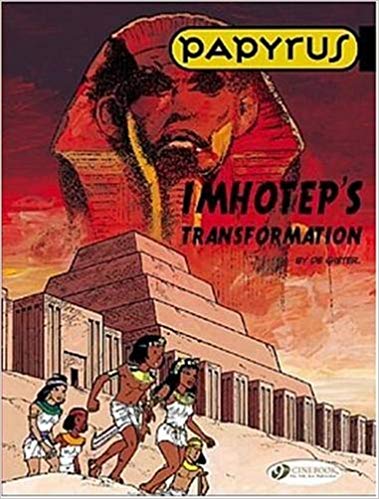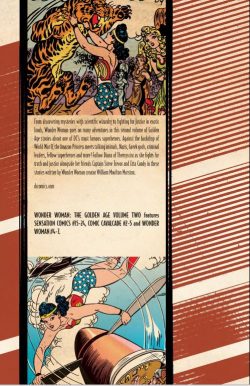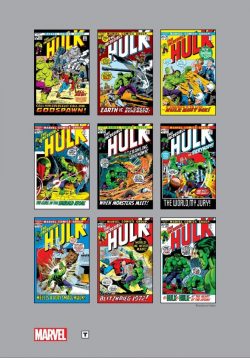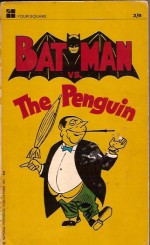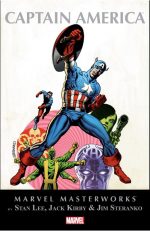
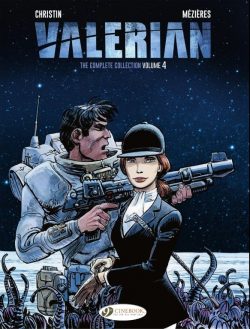
By J.-C. Méziéres & P. Christin with colours by E. Tranlé: translated by Jerome Saincantin (Cinebook)
ISBN: 978-1-84918-391-8
Val̩rian: Spatio-Temporal Agent first took to the skies and timestream in 1967 in the November 9th edition of Pilote (#420): in an introductory tale which ran until February 15th 1968. Although a huge hit, graphic album compilations only began with second tale РThe City of Shifting Waters Рas the creators concerned considered the first yarn more a work-in-progress and not quite up to their preferred standard.
You can judge for yourself by getting hold of the first hardcover compilation volume in this cinematic tie-in sequence. Or you can consider yourself suitably forward-looking and acquire one of the eBook editions…
The groundbreaking series followed a Franco-Belgian mini-boom in science fiction comics triggered by Jean-Claude Forest’s 1962 creation Barbarella. Other notable hits of the era include Greg & Eddy Paape’s Luc Orient and the cosmic excursions of Philippe Druillet’s Lone Sloane, which all – with Valérian in the vanguard – boosted public reception of the genre and led, in 1977, to the creation of dedicated fantasy periodical Métal Hurlant.
Valérian and Laureline (as the series became) was a light-hearted, wildly imaginative time-travel adventure-romp (a bit like Doctor Who, but not really so much), drenched in wry, satirical, humanist and political social commentary. The star – at least initially – was an affable, capably unimaginative by-the-book cop tasked with protecting universal timelines and counteracting paradoxes caused by casual, incautious or criminally minded chrononauts…
In the course of that debut escapade, Valerian picked up impetuous, sharp-witted peasant lass Laureline, who originated in the 11th century before becoming our hero’s assistant and deputy. In gratitude for truly invaluable assistance, he brought her back to the 28th century super-citadel and administrative capital, Galaxity, where the feisty firebrand took a crash course in spatiotemporal ops before accompanying him on his cases…. luckily for him.
This fabulous fourth oversized hardback compendium – also available digitally – once again boasts a wealth of text features, beginning with Stan Barets’ deconstructive assessment ‘Whimsical Stories with Strong Themes…’ More follows with further discourse, all supplemented with photos sketches, designs and reference material in ‘Towards the End of History?’, ‘Constantly Renewed Questions’ and retrospective overview ‘Châtelet Station: A Great Spatial and Temporal Shift’. Glittering prizes are assessed in ‘The Consecration of Angoulême’ and are followed by ‘Space Grunts’: a short complete war story from Metal Hurlant, highlighting the creative highpoints and methodology of author/illustrator Méziéres before the main event kicks off…
The opening shot in the series’ first truly extended saga, Châtelet Station Destination Cassiopeia, was originally serialised in the monthly Pilote (#M47 to M50: 21st March to June 27th 1978) before being collected later that year as 8th album Métro Châtelet Direction Cassiopée. The story concluded in follow-up album Brooklyn Line Terminus Cosmos which happily follows…
It all begins with the partners far apart in time and space. Laureline pensively journeys to the fabulous Cassiopeia system, just for once enjoying the many wonders of space as she travels at sub-light speed through the phenomenally populous yet cosmically fragile region.
Her trip to Solum is broken up by many stopovers as she cautiously gathers snippets of gossip which cohere to reveal an unsettling trend: subtly voiced concerns that some merchants are pushing strange and dangerous technologies on buyers extremely unsuited to possess them…
Although separated by centuries and light-years, Laureline and Valerian are enjoying impossibly intimate contact. Thanks to Terran ingenuity – and recent neurosurgeries – the partners are telepathically linked and sharing information on the mission.
His mission is playing out in Paris of 1980, where Valerian idly observes the variety of human types frequenting the café he impatiently haunts; constantly reminded how little he knows or understands the people and history of his birthworld.
Things aren’t helped by the volubly affable, infuriatingly unrushed and always tardy Mr. Albert. Galaxity’s man-in-the-moment is a sort of human X-Files: investigating, sifting and collating incalculable amounts of data on everything Fringe, Strange or Whacky which occurs in the 20th century he has adopted as a home-away-from-home.
Breaking contact with Laureline, Valerian learns from the verbose nerd that appalling, monstrous manifestations have been terrorising the world and now this city’s subway system. Sensing action at last, the impulsive hero rushes to the site of the latest occurrence, abandoning Albert to follow up on something which has piqued the elder’s scholarly curiosity. Both are blithely unaware that a suspect band of not-so-ordinary Parisians with similar interests are mere metres ahead of them…
What Valerian confronts is a horrific thing out of the inferno, but even it is not immune to the futuristic weaponry he’s carrying in kit form. All he has to do is assemble it before being eaten…
In the aftermath, Albert acts quickly to extract the wounded hero from hospital before doctors and cops start asking too many of the right questions. Later, over a luxurious dinner, the epicurean investigator shares a sheaf of files and clippings of monster and UFO sightings which only hint at why Valerian is stuck in a temporal backwater whilst his partner is covering colossal Cassiopeia alone…
Synching up again later despite constant headaches, Valerian hears Laureline tell of the incredible inhabitants of Solum and her candid interview with the living memory of the race, as well as sundry other wonders before contact is explosively ended by a phone call from Albert warning him that he is being watched…
After deftly dodging his tail, Valerian receives a most distressing communication from Laureline. Her pleasant chat with the memory of Solum has uncovered news of a planet which long ago endured a similar plague of mysterious manifestations. It doesn’t exist anymore…
Therefore, she’s off to incomprehensibly vile universal garbage dump Zomuk in pursuit of another promising lead, but before Val can warn her to stay away from the junk world, mind-contact is lost…
At that 20th century moment, Val and Mr. Albert are embarking on a bus ride to rural wetland idyll Doëre-la Rivière in search of marsh-monsters and dragons, only to surprisingly discover no accommodation available in the usually dead-in-the-off-season resort.
All rooms have been taken by scientists working for W.A.A.M (World American Advanced Machines): a mega-corporation in contention with the ubiquitous multinational Bellson & Gambler.
Both companies keep cropping up in Albert’s files of the weird and unexplained…
Soon the mismatched spatio-temporal operatives are trudging through acres of misty mire, encountering young Jean-René who offers to lead them to the infamous monster everybody is searching for.
When they find the Brobdingnagian beast, only Valerian’s disintegrator saves their lives. They quickly return to Albert’s paper-&-scrap-packed Paris flat, where the quirky researcher decides its time his impatient young colleague meets the secret source: a bizarre modern mystic and seer named Chatelard who cannily points out affinities between the manifestations met so far and the classical ancient concept of The Four Elements…
He also points out that one could call highly ranked corporate businessmen the “hidden high priests of today’s worldâ€, whilst mentioning that a pretty blonde woman from abroad recently offered him a lot of money for the same insights…
Later, as Albert sifts through the precious papers, reviewing all he has on Bellson & Gambler, frantic Valerian finally re-establishes contact with Laureline, just as she concludes an epic struggle against ghastly odds and enters a hidden shrine to gaze upon fantastic representations of Four Elemental Forces which underpin the universe…
Once again contact is broken and in a petulant rage the astral adventurer storms out into the Parisian night. Utterly oblivious to the fact that he is being followed by enigmatic figures in an expensive automobile, he accepts a lift from a pretty girl in a sports car…
To Be Concluded…
Bold, mind-boggling and moodily mysterious, this splendid change of pace accentuates the deadly dangers which underscore this astonishingly imaginative series; eschewing the usual concentration on witty japery and politico-philosophical trendiness in favour of mounting suspense, bubbling paranoia and stark suspense with mesmerising effect…
Brooklyn Line Terminus Cosmos was the tenth Cinebook translation: originally serialised in Pilote #M70 – M73 (March to June 1980) before being released as an album.
After a full recap the story resumes some relative hours later as Laureline finally wakes her slumbering, cosmically distant partner. She is psychically aware of the woman sleeping beside him and takes great pleasure in razzing him on his conquest “in the line of dutyâ€â€¦
Fun over, Laureline imparts crucial information: the puissant yet debased ancients of Zomuk now seemingly worship two strange new godlike beings and are sharing with them the awesome power of Elemental artefacts they have preserved for centuries. Sadly, she suspects the lordly strangers are far from divine and have extremely venal – if not outright criminal – motives for their attentiveness.
Moreover, when the deities started squabbling over the potent offerings, the native Zoms start smelling rats too…
As Laureline tracks the impostors deep into a region dominated by astral pirates and fugitives, Valerian returns to his new companion, suspicious that she also is not what she seems…
He’s not wrong. The highly competent Miss Cynthia Westerly is highly placed in one of the corporations pursuing the uncanny phenomena plaguing Paris, but is oblivious to the fact that the big oaf she thought safely seduced and abandoned is actually following when she heads for the Pompidou Centre to attempt capture of the next Elemental manifestation.
As he trails her, Valerian becomes aware that her rivals are in pursuit and plays a very deft trick to throw them all off guard…
Rendezvousing with Albert, the Spatio-Temporal Agent gets his hands on the surprisingly compact “Creature of Air and Dreams†before anybody else, but the brief contact leaves him changed and damaged…
As Albert hustles him away, Valerian slips into tenuous contact with Laureline but the communication is oddly garbled, since his consciousness is simultaneously wandering the timelines: glimpsing events from his past and many which have yet to occur…
His bewildering loss of temporal continuity continues even as Albert drags the dazed hero onto a jet, heading for a final confrontation with the warring corporate cliques. The entire journey is punctuated with bizarre visions which Laureline is forced to share, and on arrival in New York Albert takes the debilitated agent to see an old friend: aged Kabbalah scholar Schlomo Meilsheim who has some ideas on a remedy for the increasingly escalating condition…
The situation has not gone unnoticed by the voracious corporations either. With their grand schemes of profitable new proprietary energy sources threatened, they have instigated a mass convocation of every fringe scientist, modern mystic, seer, religious nut and new age quack in the country: a last-ditch attempt to regain control of those elemental forces currently tormenting Valerian…
Naturally Schlomo is invited too and brings his friends along to the desolate, snow-swept reaches of Brooklyn. When Val wanders off, terse communication with Laureline reveals the truth about his latest visions and the dangers she’s been battling single-handed in pursuit of the faux gods.
Now as Elementals catastrophically manifest amongst the massed mystics, she enacts a bold plan to cut off the problem at source; severing the uncanny connection between devastating forces devised by the Zoms and its unfortunate link to unwary, unhappy 20th century Earth…
Sly, subtle, brilliantly mind-boggling and moodily mysterious, this sharp saga is a trans-time tale of subtle power, dripping with devilish wit, but no matter how trenchant, barbed, culturally aware or ethically crusading, Valerian and Laureline yarns never allow message to overshadow excitement or entertainment. This is one of the most memorable romps you could ever imagine and there’s even better to come…
Les Spectres d’Inverloch originally appeared in Pilote #M110-117, (spanning July 1983 to February 1984) and opens here as Laureline enjoys the comforts of a palatial manor in Scotland, somewhere at the tail end of the 20th century. Unflappable dowager Lady Charlotte is a most gracious host and happily shares every benefit of life in Clan McCullough, even though her young charge can’t help but wonder why she has to cool her heels with the old biddy in this odd time and place…
Once again, the Spatio-Temporal partners-in-peril are separated by eons and light years. Valerian is at the other end of everything: impatiently stuck on water-world Glapum’t, trying to capture a hulking aquatic beast who easily defies his every stratagem. Finally, once brute force, commando tactics and super-science have all proved ineffectual, the frustrated agent tries bribery. Naturally, the tasty morsels he offers are heavily drugged…
However, as he carries the second phase of his orders, a real problem crops up. Valerian can’t establish contact with Galaxity…
Far ago and elsewhere, London is enduring a paralysing wave of industrial actions. The strikes are particularly galling to volubly affable, infuriatingly unrushed and always tardy Mr. Albert. Galaxity’s 20th century information gatherer/sleeper operative is trying to get to Scotland, but wonders if he’s ever going to get out of the English capital…
On far-flung Rubanis, dictatorial secret police chief Colonel Tlocq is having a duel of wits with the engagingly ruthless data-brokers known as the Shingouz. Naturally, the spymaster is utterly outmanoeuvred by the devious little reptiles who gleefully take off with the secret they required. All-in-all, they are rather enjoying working for Earth…
Way back in West Virginia, Lady Charlotte’s husband Lord Seal is consulting with the CIA. The dapper Briton is a past master of “tradecraft†and remains unperturbed even after reviewing the terrifying situation facing both Communist Bloc and Free World. Something is making all persons in charge of nuclear weapons – politicians and military alike – go mad. There have been numerous near-misses and even a couple of swiftly hushed-up actual disasters on both sides of the Iron Curtain. Moreover, the Americans have got hold of strange little devices used to cause the insanity. Somebody is deliberately trying to spark atomic Armageddon…
Only the veteran spy’s swift actions prevent the entire assembly going the same way, when a concealed insanity-gadget goes off during their top-secret meeting…
As Seal jets off home, the scene switches to Galaxity. The super-city, impregnable bastion of human dominance, is deserted. Only its supreme master remains, and as the fortress and Terran empire start dissolving into nothingness, he makes a desperate jump into time…
On a clear autumn afternoon, Lady Charlotte and Laureline are enjoying the view from Castle Inverloch’s rear windows when the immaculate, lovingly-manicured-for-centuries lawns are wrecked by the crash-landing of a Shingouz shuttle. Naturally, the visitors are granted every gracious vestige of hospitality, even after Lord Seal arrives in flamboyantly bombastic fashion and sees what’s become of his beloved grass…
Aplomb and grace under pressure alone cannot account for the elderly couple’s acceptance, and when Albert pops in and Valerian shows up – much to the detriment of what remains of the lawns – it becomes clear that the elderly gentry know much more about the workings of the universe than everybody else in this century…
Even the previously-captive Glapumtian – who likes to be called “Ralph†– has a part to play in the baffling, pre-ordained proceedings.
What exactly that means starts to become clear after Lord and Lady Seal introduce their outré guests to the legendary ghost of Inverloch. Valerian usually just calls him “bossâ€â€¦
Soon the Spatio-Temporal Agents are being made painfully aware of a monumental threat to the universe which has already unmade the events leading to the birth of Galaxity and the Terran Empire and which now poses a threat to all that is…
To Be Concluded…
Smart, subtle, complex and frequently hilarious, this sharp trans-time tale beguilingly lays the groundwork for an epic escapade. This is one of the most memorable romps Méziéres & Christin ever concocted, and heralded the start of a whole new way to enjoy the future…
The Wrath of Hypsis concludes a landmark tale and marks a turning point in the ongoing epic. Initially every Valérian adventure began as a serial in Pilote before being collected in album editions, but after this adventure from 1985, the publishing world shifted gears. From the next tale and every one thereafter, the mind-bending sagas were released as all-new complete graphic novels. The switch in dissemination affected all popular characters in French comics and almost spelled the end of periodical publication on the continent…
One clarification: canonically, “Hypsis†is counted as the twelfth tale, due to the collected albums being numbered from The City of Shifting Waters: the second actual story but the first to be compiled in book form. When Bad Dreams was finally released as a European album in 1983, it was given the number #0.
Les Foudres d’Hypsis originally appeared in Pilote #M128-135, (January to September 1985): an action-packed yet trenchant romp resetting a growing paradox that had been slowing building since The City of Shifting Waters…
In previous volume The Ghosts of Inverloch, Galaxity was eradicated from reality by agents unknown, leaving only the Chief of the Spatio-Temporal Service to plunge back in time to 1986: the chronal crisis-point which triggered the disaster.
Spatio-Temporal partners-in-peril Valerian and Laureline joined him by extremely convoluted paths after gathering a trio of Shingouz traders and affable, aquatic super-mathematician Ralph from different eras and galactic backwaters.
They all met up at Inverloch Castle, far from escalating petty crises and a mounting unrest afflicting Earth that would soon peak with the melting of the polar ice-caps, destruction of modern human civilisation and consequent birth-pangs of Galaxity.
The Scottish citadel was home to British intelligence supremo Lord Seal, his brilliant wife Lady Charlotte and guest Mr. Albert. This distinguished, exceptional band had gathered to prevent Earth’s devastation but Galaxity’s sudden disappearance added even greater urgency to the mission…
The tale continues here as the strange crew review the worsening situation. Nuclear powers across Earth are experiencing inexplicable, potentially fatal malfunctions. Alien objects keep appearing in random locations and – thanks to the extraterrestrial input of Seals visitor’s – they can now lay blame upon the machinations of Hypsis: an enigmatic planet constantly perambulating from system to system, quadrant to quadrant…
Seal’s contacts have narrowed down the potential crisis point to one of a number of ships in the Arctic. Soon the odd allies are covertly heading north in British weather ship HMS Crosswinds…
Thanks to Ralph’s talents and growing friendship with a pod of Orcas, the maritime search is gradually narrowed down and before long Crosswinds closes in on a quaint schooner named Hvexdet… and none too soon.
The time-displaced Chief has locked himself in his cabin, Valerian is wracked by nightmares of vanished Galaxity and numerous doomed Earths whilst the gambling-addicted Shingouz have almost won or traded everything aboard ship not bolted down or welded on…
Cornering the Hvexdet in a field of pack ice, dauntless Captain Merryweather gives orders to ram, spooking the schooner into blasting off into space and instituting devastating retaliation. It’s what the Chief has been waiting for. With Crosswinds sinking and the crew heading for the lifeboats, he orders Valerian, Laureline, Seal, Albert, the Shingouz and Ralph to join him in the astroship: following the invaders’ flight to find nomadic Hypsis…
Pursuit is erratic and convoluted until Valerian has the idea of linking Ralph to the ship’s systems to predict Hvexdet’s final destination. It works perfectly and before long the astroship touches down on a strange, rocky world with immense towers dotting the landscape.
And that’s where things get really strange as Valerian learns why Earth was scheduled for nuclear meltdown, meets the incredible true owners of the troubled birthplace of humanity and watches in astonishment as Albert, Laureline and the Shingouz negotiate an unbelievable deal which saves Earth, but not (necessarily) his beloved and much-missed home Galaxity…
Astute fans will realise that this ripping yarn was writer Pierre Christin and artist Jean-Claude Méziéres’ way of rationalising the drowned Earth of 1986 (as seen in 1968 adventure The City of Shifting Waters) with the contemporary period that they were now working in. It also gave them an opportunity to send Valerian and Laureline in a new direction and uncharted creative waters…
To Be Continued…
Smart, subtle, complex and frequently hilarious, these sharp trans-time tales beguilingly blend outrageous satire with blistering action, and deft humour with cosmic apostasy: utterly reenergising what was already one of the most thrilling sci fi strips in comics. The Wrath of Hypsis and its successors are the most memorable romps Méziéres & Christin ever concocted, heralding the start of a whole new way to go back to the future…
These stories are some of the most influential comics in the world, timeless, thrilling, funny and just too good to be ignored. The time is now and there’s no space large enough to contain the sheer joy of Valerian and Laureline, so go see what all the fuss is about right now…
© Dargaud Paris, 2017 Christin, Méziéres & Tran-Lệ. All rights reserved. English translation © 2018 Cinebook Ltd.
